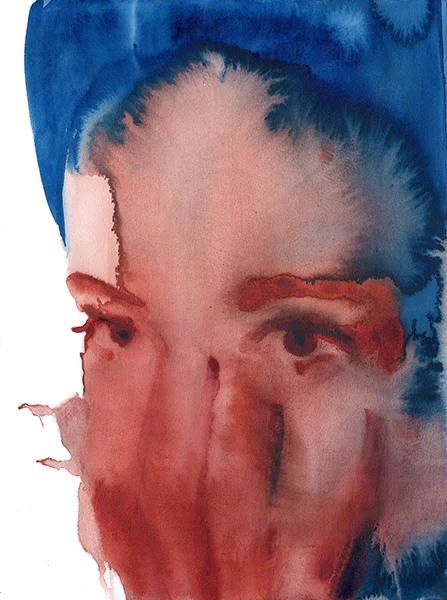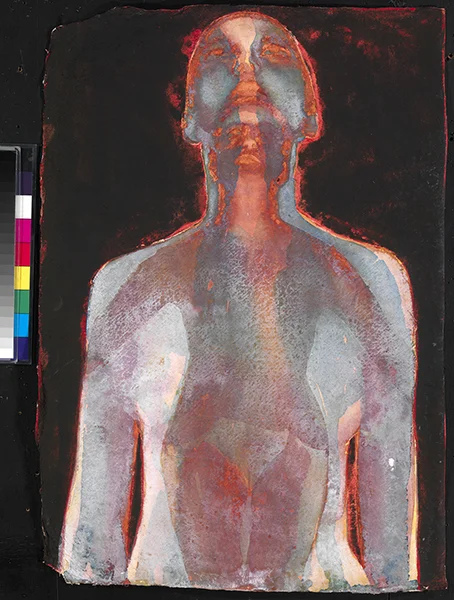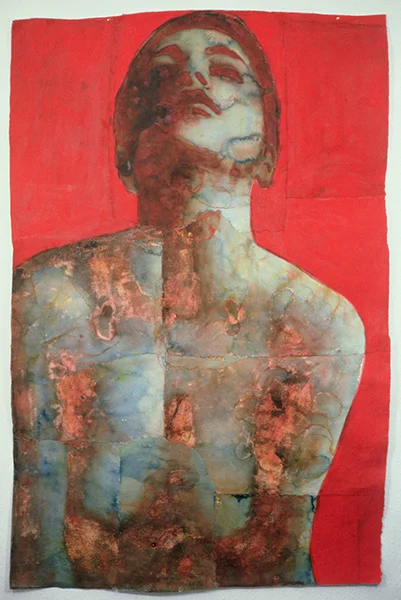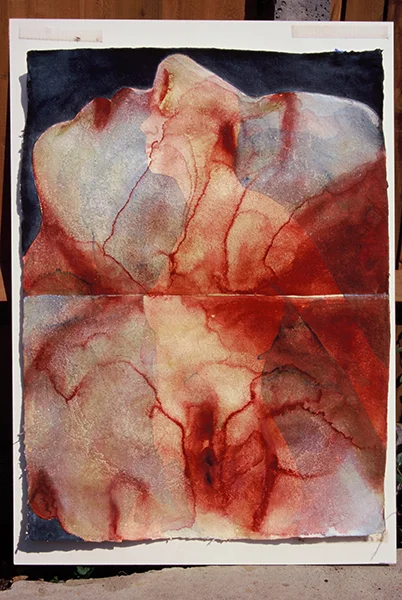Vol.133_Graham Dean
Graham Dean
Interviewed by Kim Kieun
From Brighton, England
In most of your works, I can see that you focus on the human figure and the various emotions that it encompasses. Tell us how you have established your style of work.
Most of my work is intuitively created; I start with ideas/drawings I collect in my work-books – often loose forms which then develop into possible ideas. These work-books date back a long way and I refer to them all the time. If I’m working on several figure paintings, then I will bring in a model to the studio to experiment and try out various positions and ideas, and in fact talk about them. I do find myself talking more and more with the model about what I’m trying to do and also about their feelings or emotions towards certain ideas. They sometimes tell me that I know more about them than their partners do, but I do work with the same models over a period of time, so we do develop a relationship. Plus, there is a strong psychological element to my work, I really do like to get inside an idea. A new model once came into my house, looked around at all the paintings and said “Oh, it’s like walking into your mind”.
I felt mostly gloomy when viewing your works, it is a deep feeling that they render. How do you discover and then represent all these complex states of mind?
Oh dear... “mostly gloomy?” I hope not, I would hate to think my work is perceived as gloomy. Most people tell me that my works are “charged with emotions” or they are atmospheric, strange, haunting, sensuous, visceral... these are the adjectives mostly used. But as I said in the previous answer, most of this is intuitive; I really do aim for a “feel”, an elusive quality whereby the viewer can project their own thoughts and feelings towards any given work. Take Enfold (2018) for instance. This is a painting that can be interpreted in many ways. Is the figure being protective towards an inner child or a desire? Or is there a need in her for another being? Is there someone else she is concerned with or thinking about? It is this deliberate ambiguity that intrigues me. I’m not really interested in straight forward, narrative based figuration or even academic figurative art. I feel I must distance myself from this way of working. If you think of some of Tarkovsky’s films and the relationships between the characters, landscapes or situations where the viewer is not too sure what is going on, but the scenes remain charged with a resonance and a psychological beauty, then that is close to what I’m after. I only wish though that I had a tenth of Takovsky’s talent! Ideas don’t come easy. I often say that for such a quick medium, these are the slowest watercolours in the world. Sometimes they can take years to complete.
I wonder how you prepared the project Painting Music.
I became good friends with Peter Gabriel around about 1978; we were both interested in the then new development of video and how it could be developed at that time. He was looking for a new guitarist to work with and I had just seen a band called Random Hold and thought the guitarist had an interesting array of sounds, so I suggested David Rhodes to Peter. This relationship has lasted now over 40 years and though Peter has remained a close friend, I have got to know David as well. When I was looking for someone to do the soundtrack to a short film that I made, I asked David if he would do it in exchange for one of my paintings. The result was a perfect marriage, a hybrid of music and image. People remarked on how well the music fused with the imagery which was mainly close ups of my paintings and the fluidity and texture of the paint. Words like “haunting” and “sensuous” were used to describe it. Then many years later I was approached by Rick Takvorain who was an arts festival director to see if it would be possible to recreate the film in a live setting. We decided to lengthen the whole concept and to make it more complex with multi layers and the first performance was in an empty church building in Germany with a camera crew. The paintings that I was making on the spot were projected live throughout the church – enveloping and emerging across pillars, ceilings etc. David was playing live responding to what I was doing via a monitor on the stage. It was very atmospheric and we went onto to perform in a number of different venues, but I believe the church setting was the most perfect for us. We would welcome the chance to repeat these performances.
.
.
.
You can check out more images and contents through our magazine!




